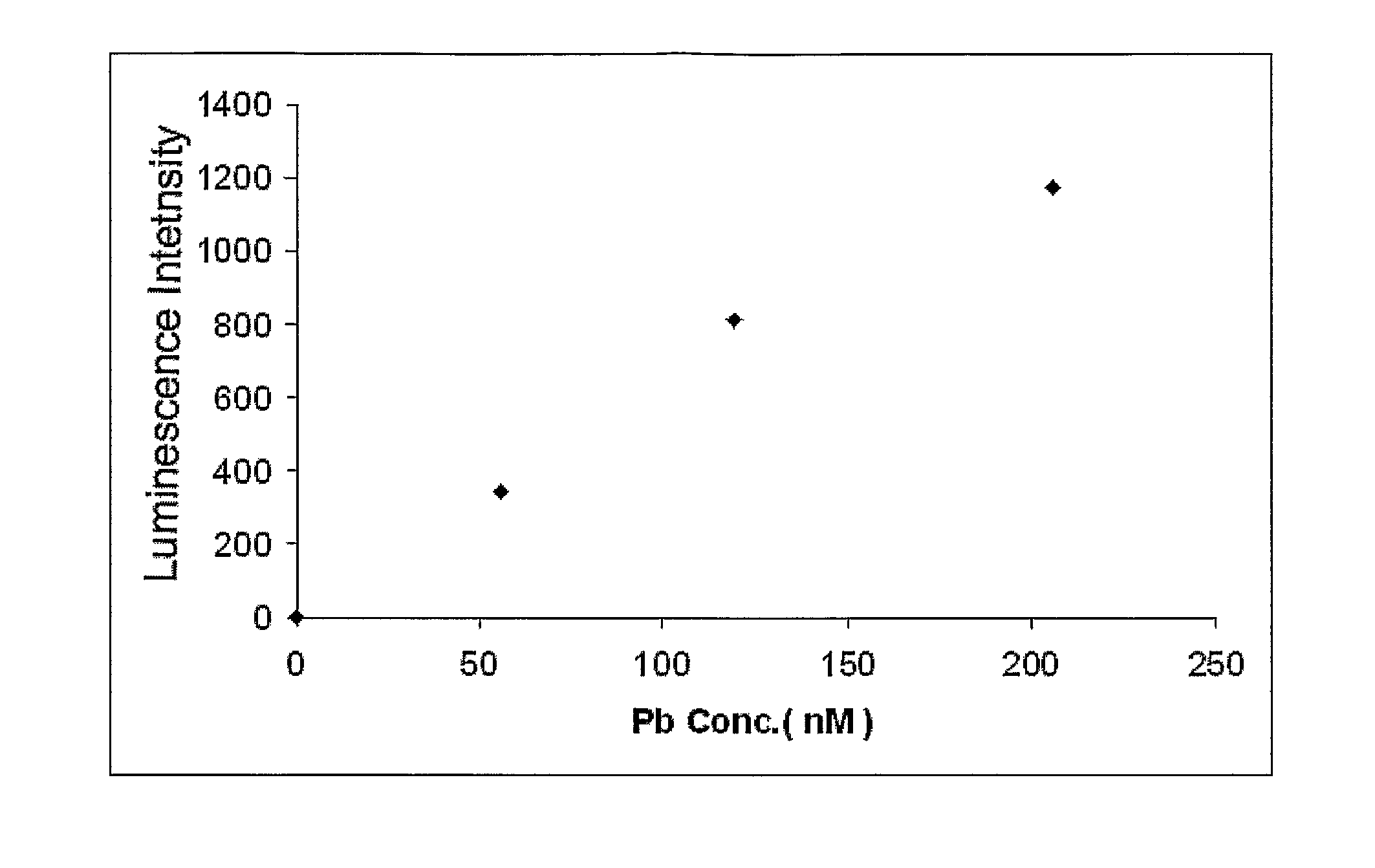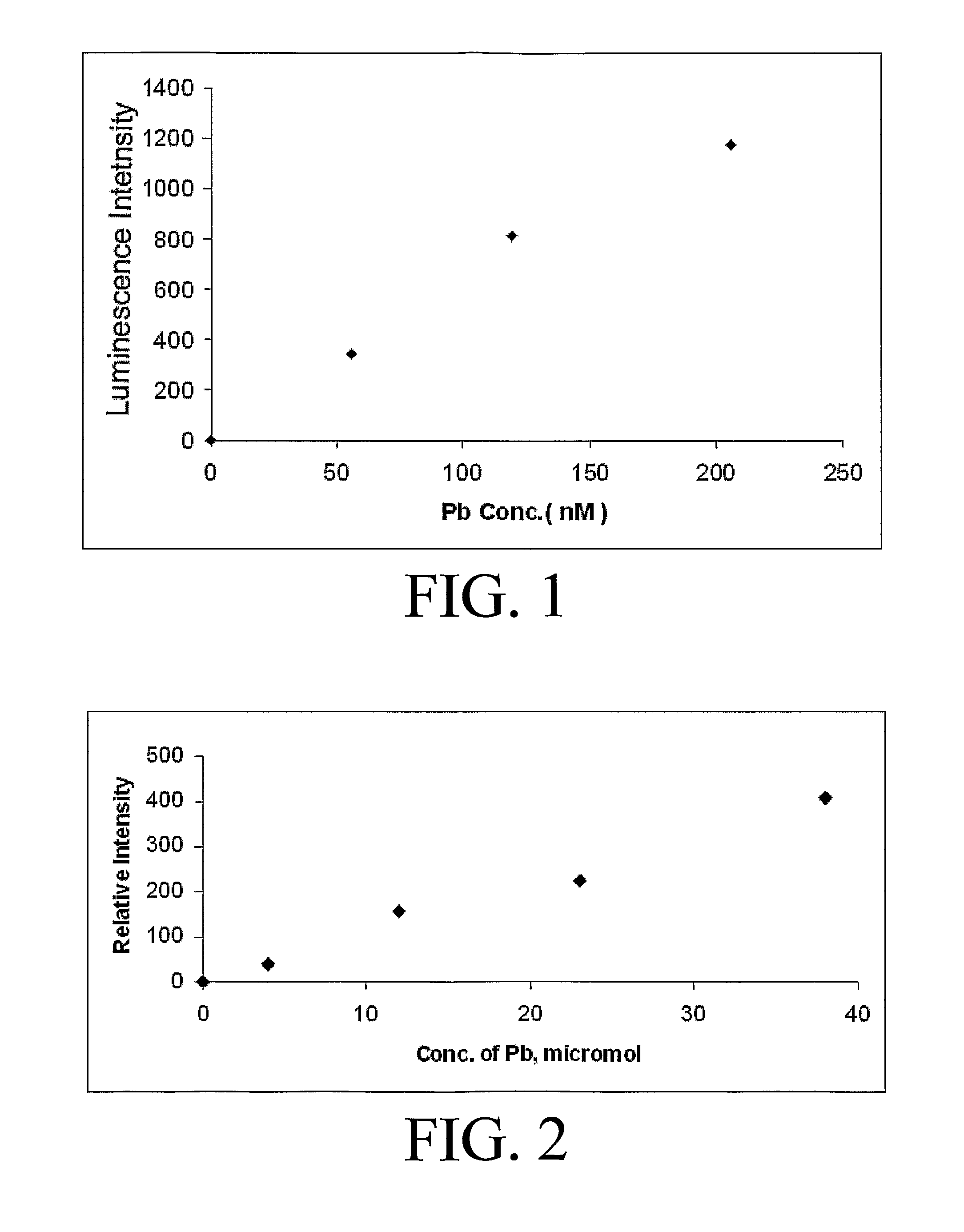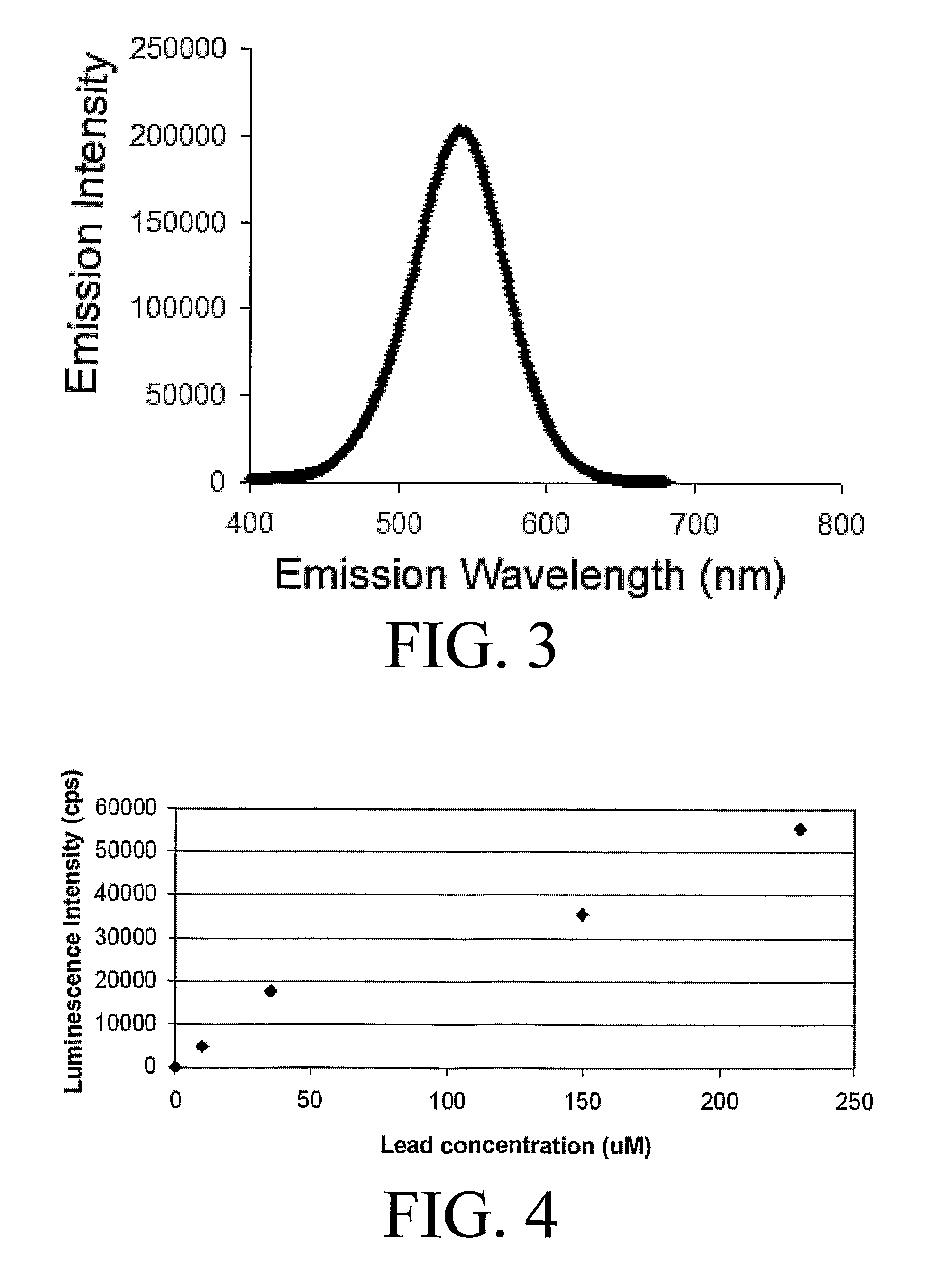Quantitative detection of lead in water
a technology of lead and water, applied in the field of lead cluster luminescence, radical polymerization, synthesis and characterization of polymers, and measurement of extracted lead, can solve the problems of insufficient direct use of environmental samples, ubiquitous and harmful environmental pollutants, and requiring complex and time-consuming pretreatment of samples, etc., to achieve efficient luminescence
- Summary
- Abstract
- Description
- Claims
- Application Information
AI Technical Summary
Benefits of technology
Problems solved by technology
Method used
Image
Examples
embodiments
[0049]In one embodiment, the invention provides a method for measuring lead from an aqueous environment. Three types of monitoring systems have been described herein and are encompassed within the present invention. In the first system, the lead is extracted into a nonaqueous phase where it forms the luminescent lead cluster, but excellent detection still results even when the solvent is saturated and still in contact with water.
[0050]In the second system, the hydrophobic domain was introduced directly into the water in a soluble form. This allows a one-phase measurement.
[0051]In the third system, the hydrophobic domain was in a water-insoluble but swellable polymer. With a suitably reversible system, real time monitoring of the lead concentration should be feasible. The current irreversible system would be good for catching the highest lead concentration during the sampling interval.
[0052]The present invention provides detection limits of the two-phase system which are below the cu...
example 1
[0059]Methods
[0060]The lowest detection limits have been achieved using a two-phase system consisting of TOAB in toluene to extract the complex into the toluene. The partitioning of the complex into the toluene layer is highly favored so that the volume of toluene can be smaller than the water volume, which further improves the detection limits. Sodium bromide (1 M) can be added to the aqueous phase to improve the detection limit, but is not required. A water sample to be analyzed was placed in a long cell. The toluene and TOAB along with NaBr were added. The solution is shaken or mixed and then allowed to phase separate. The upper toluene layer was then placed in the luminescence detection instrument, excited in the 350-380 nm region, and the emission intensity was monitored at approximately 550 nm (the optimum wavelength varies with solvent). FIG. 1 shows a calibration curve for the system at low levels; less than 50 nM lead was detected.
[0061]Results
[006...
example 2
Two Phase System (Cyclohexane)
[0063]Cyclohexane was used as an immiscible phase. This method yielded a diffuse, thin, highly luminescent layer in the cycloxane layer. (This highly luminescent layer might well have allowed even lower detection limits.)
PUM
| Property | Measurement | Unit |
|---|---|---|
| luminescent properties | aaaaa | aaaaa |
| luminescent | aaaaa | aaaaa |
| water miscible | aaaaa | aaaaa |
Abstract
Description
Claims
Application Information
 Login to View More
Login to View More - R&D
- Intellectual Property
- Life Sciences
- Materials
- Tech Scout
- Unparalleled Data Quality
- Higher Quality Content
- 60% Fewer Hallucinations
Browse by: Latest US Patents, China's latest patents, Technical Efficacy Thesaurus, Application Domain, Technology Topic, Popular Technical Reports.
© 2025 PatSnap. All rights reserved.Legal|Privacy policy|Modern Slavery Act Transparency Statement|Sitemap|About US| Contact US: help@patsnap.com



